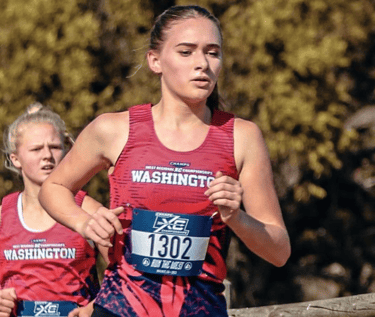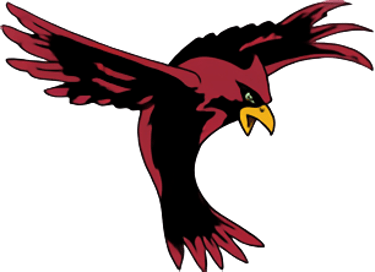Nothing is worse than being injured! Injury prevention is an important part of training. Preventing and treating injuries is vital to our program, and when athletes are aware of these aspects it makes us stronger. Running can be hard on the body with repetitive movements and daily work. Minor aches and pains are bound to occur, but it is important to be able to decipher between a minor problem and a bigger injury. One of the most important aspects of preventing any sort of injury is having the proper equipment. In this sense, make sure you have a good pair of running shoes!
Choosing the correct shoe for your body can be difficult, but there are many resources that are available to find the right one for you. Teammates and coaches are great people to ask in addition to finding reviews and information online. The shoe store, Fleet Feet provides an analysis of your foot to find the shoes that would work best for you, and is another good resource. Other variables, such as mobility/flexibility, recovery, and strength training can also be helpful in reducing the chance of injuries- but your coaches will help with that!
Drills
This is the most important ancillary work that you will do. Ancillary work is anything that supports running while not being specific to running, think Core, Strength Training, Stretching, & Drills. Please view the MLXC WarmUp document using the hyperlink, for more info.
Common Injuries
The injuries covered here are mostly chronic injuries. Acute injuries are sudden and often cannot be prevented. With running, however, chronic pain is the most common form of injury! Below are the most common running injuries and how to prevent and treat them:
Shin Splints
Shin splints present as pain on the front of your lower leg that is typically on the inside next to your shin bone. Shin splints can be prevented with the proper progression of training, which is why it is important to discuss where you are at and what activities you do with your coaches.
Wear supportive shoes that are made for running and are fit for your feet
Don’t overtrain or increase your activity levels too quickly, and don’t get greedy!
Stretch your calves and hamstrings, tight muscles = not good. Foam rolling and stretches are important parts of the recovery
Strengthen your foot and ankles
Strengthen your hip muscles
Run on various terrain, not just hard concrete
Form drills- having proper form and landing techniques can help avoid shin splints
Foot Injuries
Foot injuries can encompass plantar fasciitis, bunions, Achilles tendon injuries, ankle sprains, and other pain located in the foot and ankle region. Typically foot injuries are pretty complex since there are so many joints, bones, and muscles that help propel your body.
Wear the right shoes
Stretch your leg and foot muscles
Work on balance
Ankle mobility
Don’t skip warming up
Don’t lace your shoes too tightly
Replace your running shoes when they have worn out
Look into orthotics, some people have very low or very high foot arches
Knee Problems
Knee problems typically encompass the patella and hamstring, but can also include the IT band.
Resistance exercises, strengthening the muscles around the knee
Backwards walking
Work on core and hip strength
Shorten stride/cadence
Wear proper shoes
Hips
Hips are very important to running. Having strong hips can help prevent other injuries not specific to the hip region. Hip and groin injuries as well as tears can occur if proper prevention isn’t taken.
Stretch your hip muscles and utilize hip activation movements for stabilization
Strength training
Mobility exercises
Warm up your body properly
Follow the Myrtl Routine as a Prehab/Rehab
Best Practices:
Hydrate, hydrate, hydrate
Eat Food! Food is Fuel
Get plenty of sleep, try to get 8-10 hours. Your body heals the most when you are sleeping
Stretch and roll out your muscles
Overall, we do NOT want to be injured (who does anyways?). However, sometimes it is hard to determine the extent of your injury. The best way to determine your course of action when you believe an injury may be forming is to talk with your coaches. There is only so much you can do yourself when preventing injuries and your coaches are there and want to help you navigate these issues. You may have noticed that many injury prevention techniques are shared over different injuries. If you are unsure of ways you can strengthen, stretch, or perform the proper drills your coaches have those resources. Don’t be afraid to ask questions! If an injury does occur, your coaches are there to support you and reevaluate your training. Most of all, don’t be afraid of injuries. Being precautionary is good, but keep a balance. Running should be fun!!
Author - Kayla Ramsey c/o 2023


MLXC Prehab Document Instructions
Bodyweight Squat
How To: Take a comfortable, athletic stance. Sit your bum back and bend at the knees. When you reach a comfortably challenging depth, push up and return to the starting position.
Why To: Squats are a great exercise for all humans. No matter your goals, squats can help you get there.
What To: There is no wrong way to squat! If it's more comfortable to put your hands forward for balance that's totally fine. It's also 100% fine for your knees to go over your toes.
Double Leg Calf Raise Off Step
How To: Place the balls of your feet on the edge of a step. Lift both heels up to their highest point, pause briefly. then slowly lower down until you feel a stretch. Pause, then return to the top. This exercise strengthens your calves which support our movement and pump blood back to the heart during activity.
Why To: This exercise strengthens your calves which support our movement and pump blood back to the heart during activity.
What To: The pauses at the top and bottom are key. The calves are highly elastic so pausing helps us work the muscle rather than just bouncing!
Bridges
How To: Lie comfortably on your back and place your feet flat on the ground with your heels near your glutes. Squeeze your glutes to lift your trunk to where you could draw a straight line from your knees to your hips to your shoulders. Hold for a moment, then lower back to the starting position.
Why To: This exercise helps develop strength in our hip and glute muscles.
Single Leg Romanian DeadLift
How To: Take an athletic stance. Shift your weight onto one foot and allow a slight bend in that knee. While keeping your back mostly flat, hinge at the hips and reach down towards the floor. Pause then return to the starting position. You should feel the hamstring and glute of the working leg working. This exercise strengthens our hamstring and glutes while also training our single leg balance and athleticism.
Why To: This exercise strengthens our hamstring and glutes while also training our single leg balance and athleticism.
What To: When 8 reps of this movement become easy, you can add a comfortably challenging weight to the hand on the opposite side to the working leg.
Bridging with Alternating March
How To: Same setup as a normal bridge. Then at the top, lift one leg a few inches off the ground, hold it for a moment, then lower back to the starting position. Repeat on the opposite side.
Why To: This exercise helps develop glute strength,single leg control, and athleticism.
What To: Always try to keep the rest of your body stable as you lift each leg.
Toe Spreading
How To: While keeping the heel and ball of the foot grounded, lift your toes and spread them as wide as they will go. Relax and repeat.
Why To: This exercise helps activate and enhance the strength of the intrinsic muscles of the foot.
Toe Yoga
How To: Stand comfortably with the heel and ball of the foot grounded. Begin by lifting the big toe while keeping the other four on the ground. Then lower the big toe and repeat with the four minor toes.
Why To: This strengthens the intrinsic muscles of the foot.
Toe Curls
How To: Lay a kitchen towel or hand towel on the floor in front of you put the toes of one food on the end of the towel and scrunch your so you pull the towel toward you.
Why To: This exercise works the intrinsic muscles of the lower leg and foot so you can have a strong, coordinated foundation.
Eccentric Ankle Inversions
How To: Sit as shown with a band around the middle of one foot and the ball of the other. Use your hand to point your food upward and inward, then slowly lower against the resistance of the band. The lowering portion should take about three seconds.
Why To: This exercise has been shown to be the most effective at directly improving mild soreness in the posterior tibialis.
